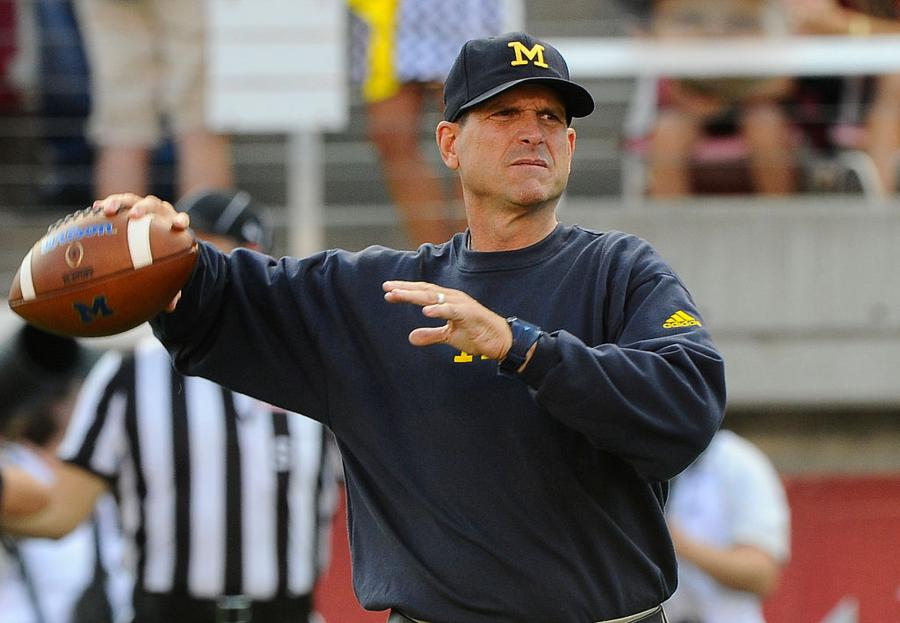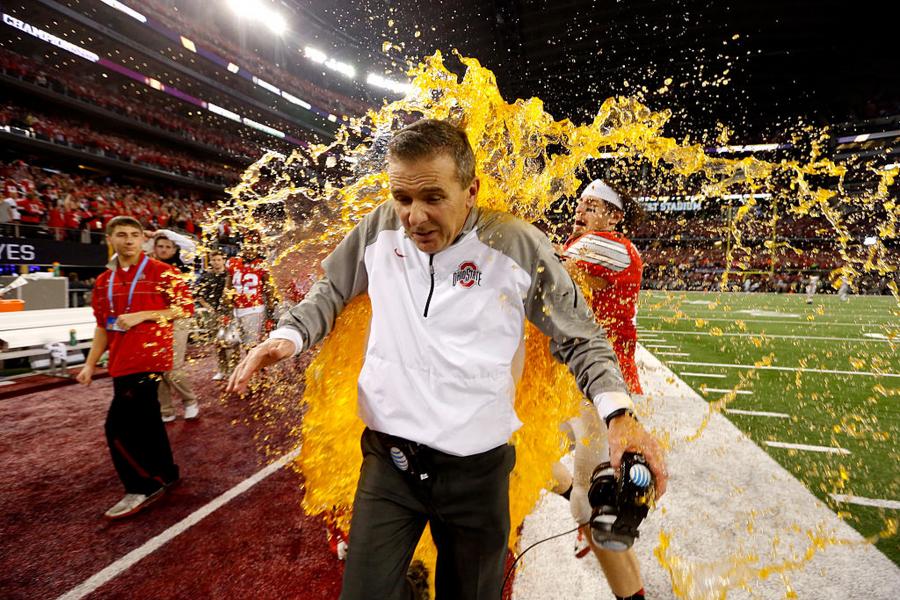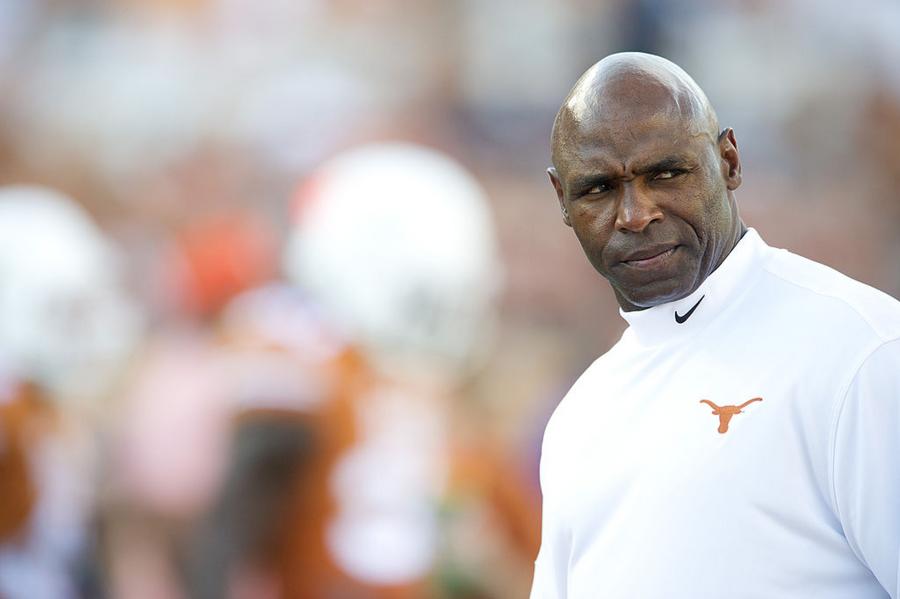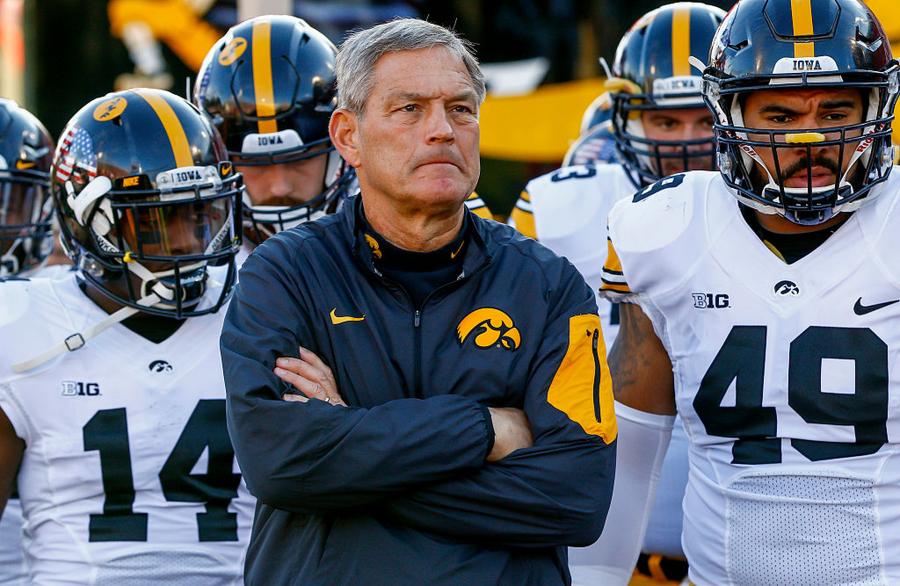A gig as a college football head coach is pretty sweet. You have a chance to develop young men into potential stars at the next level, you get to travel around the country when meeting recruits, and you can make some good money.
Some real good money, if you're one of the best coaches in the game. In addition to signing bonuses and base salary, many coaches can earn additional money by achieving various incentives throughout the year. Here's a look at the highest-paid football coaches at the college level.
Jim Harbaugh, Michigan: $9,004,000
Harbaugh makes more than any other college football coach thanks to a complex life insurance policy. As long as he's coaching at the University of Michigan, he'll receive $2 million every December 6, including this year. He actually has the opportunity to make more than $10 million if he achieves a number of goals, including making and winning the Big Ten Championship game, reaching the College Football Playoff, winning the National Championship, and taking home one of several coaching awards. If Harbaugh reaches the $10 million milestone, he'll earn more than 19 schools spent on their entire athletics programs last year.

Gene Sweeney Jr/Getty Images
Nick Saban, Alabama: $6,939,395
Saban is in his ninth full season coaching at the University of Alabama, and the worst any of his teams ever finished was in 2010 when the Crimson Tide went 10-3 and ended up ranked No. 10 in the Associated Press poll. Saban has brought home four national championships since arriving in 2007 and looks on track to make the College Football Playoff again this year. His base pay remains unchanged from last year, but thanks to a new NCAA rule, schools don't have to report employees' athletically related outside income. Saban has earned at least $150,000 annually of that kind of income.
Urban Meyer, Ohio State: $6,094,800
Meyer has only lost five games in five seasons at Ohio State, and his tenure includes an undefeated season in 2012 (though the Buckeyes were ineligible for a bowl game that year) and a National Championship the first year of the College Football Playoff in 2014. The Buckeyes have already lost once this year, but if they win out, they'll likely find themselves back in the playoff after missing it last season. Meyer's contract requires Ohio State to give him at least six percent raises in several areas of his compensation every year. Through last season, those raises totaled $303,000.

College Football Playoff – Pool/Getty Images
Bob Stoops, Oklahoma: $5,550,000
Stoops has been in charge at Oklahoma since 1999, winning eight bowl games and reaching the BCS National Championship Game in 2008. After last season, Stoops had his contract extended through 2021. He received his $150,000 raise this year, and future seasons will have increased pay raises.
Jimbo Fisher, Florida State: $5,250,000
After a run of success earlier this decade, the Seminoles are experiencing their worst season in quite some time. No worries for Fisher, though. He's in the second year of an eight-year contract, and he's set to receive $100,000 raises every year.
Charlie Strong, Texas: $5,200,130
Isn't it funny how quickly things can change in the college football world? During this year's opening weekend, the Strong-led Texas Longhorns defeated then-No. 10 Notre Dame. It looked like a renaissance for the Longhorn program. Fast forward a couple of months: the Fighting Irish are only 3-6 and were horribly overrated coming into the year and Texas just finally climbed above the .500 mark for the season. Strong has made nearly $15.3 million in his first three seasons at Texas, and so far, he hasn't ended a year with a winning record. His pay is due to increase $100,000 next year, but how much longer does he have to turn it around?

Cooper Neill/Getty Images
Kevin Sumlin, Texas A&M: $5,000,000
Sumlin has seen the Aggies' record decline each year since his arrival in 2012, but the program has experienced a bit of a resurgence this year. One thing that will remain constant is Sumlin's salary: his pay stays the same for the entirety of his contract, which runs through 2019.
Gus Malzahn, Auburn: $4,729,500
Here's how crazy the pay scale in the SEC is: The Tigers went 7-6 last season with just two conference wins and Malzahn still got a $375,000 raise on top of the $250,000 increase he already was set to receive this year. Even with another struggling season, Auburn stands to lose a lot of money if it fires Malzahn, so expect him to stay on at least for the rest of the year.
Hugh Freeze, Mississippi: $4,703,500
Freeze took over at Mississippi back in 2012 and made $1.5 million that year. Since then, the Rebels have seen success on the field, and after a $400,000 raise last season, when his team went 10-3 and won the Sugar Bowl, Freeze is making more than three times what he made during his debut season with the school.
Kirk Ferentz, Iowa: $4,500,000
Over his first 16 seasons with the Hawkeyes, Ferentz won ten games just four times. And then last year made Ferentz very wealthy. Iowa started 12-0 before losing in the Big Ten title game and the Rose Bowl. That resulted in $900,000 in bonuses, a $425,000 raise for himself, and $250,000 in raises for his staff. On top of all that, Ferentz can pick up another $500,000 if his Hawkeyes win eight games this season. It's a long shot, but it's still possible.

Michael Hickey/Getty Images
James Franklin, Penn State: $4,500,000
Despite two lackluster seasons since joining Penn State, Franklin received a $100,000 raise this year. He can make another $200,000 for appearing in just about any bowl game. The Nittany Lions also helped cover the $1.5 million Franklin owed when he terminated his Vanderbilt contract early in order to coach for Penn State.
In total, there are 20 coaches in college football who will make more than $4 million this year. Here are the remaining coaches that will hit the $4 million mark:
Dabo Swinney: Clemson: $4,422,700
Les Miles, LSU: $4,385,567
Mark Dantonio: Michigan State: $4,300,000
Jim McElwain, Florida: $4,268,325
Dan Mullen, Mississippi State: $4,200,000
Bret Bielema, Arkansas: $4,145,000
Butch Jones, Tennessee: $4,110,000
David Shaw, Stanford: $4,067,219
Gary Patterson, TCU: $4,014,723
/2015/11/GettyImages-490166160.jpg)
/2022/01/GettyImages-631364606.jpg)
/2013/09/GettyImages-187519634.jpg)
/2015/09/GettyImages-159097678.jpg)
/2024/05/GettyImages-1453919094.jpg)
/2018/11/GettyImages-1064840818.jpg)
/2019/01/James-Altucher.jpg)
/2013/12/dan.jpg)
/2011/12/John-Mara-1.jpg)
:strip_exif()/2020/06/taylor.png)
/2010/12/kate-1.jpg)
/2020/10/the-miz.png)
/2011/12/Rooney-Mara1.jpg)
/2020/08/gc-1.jpg)
/2014/04/GettyImages-886617106.jpg)
/2011/01/Aaron-Rodgers.jpg)
/2022/10/peter-krause.jpg)
/2010/03/emil.jpg)
/2020/04/hailey-joel.png)
/2015/09/Daley-Thompson.jpg)
/2020/10/david.jpg)
/2009/11/Brandon-Jennings.jpg)
/2019/01/Kennedy-Montgomery.jpg)